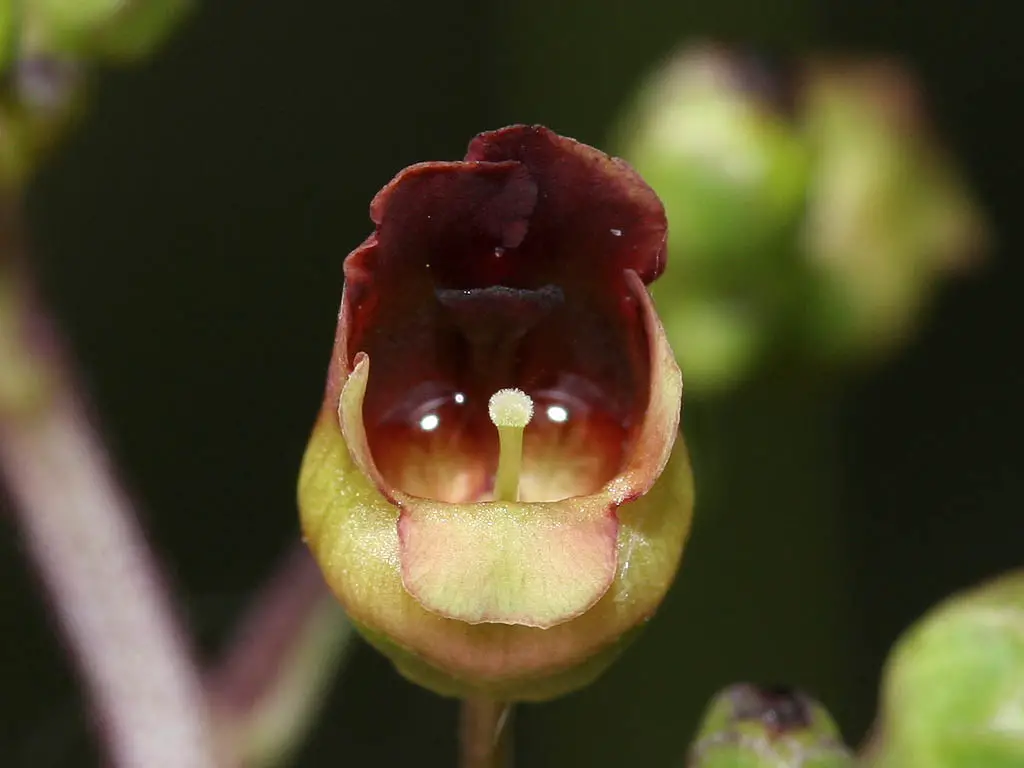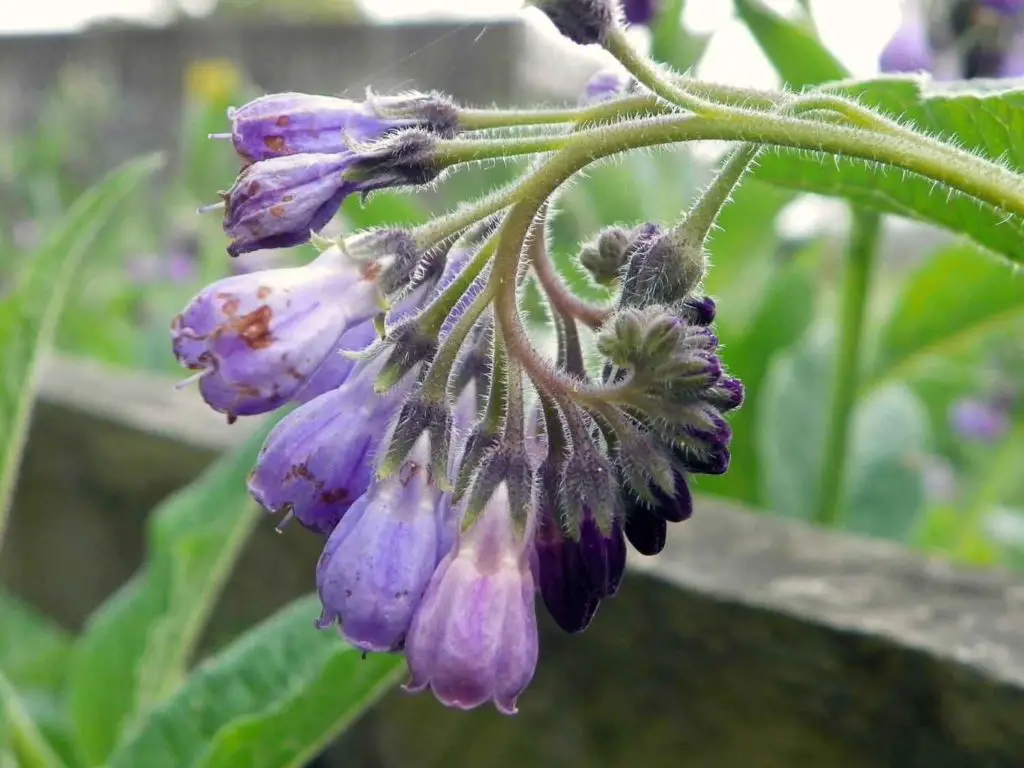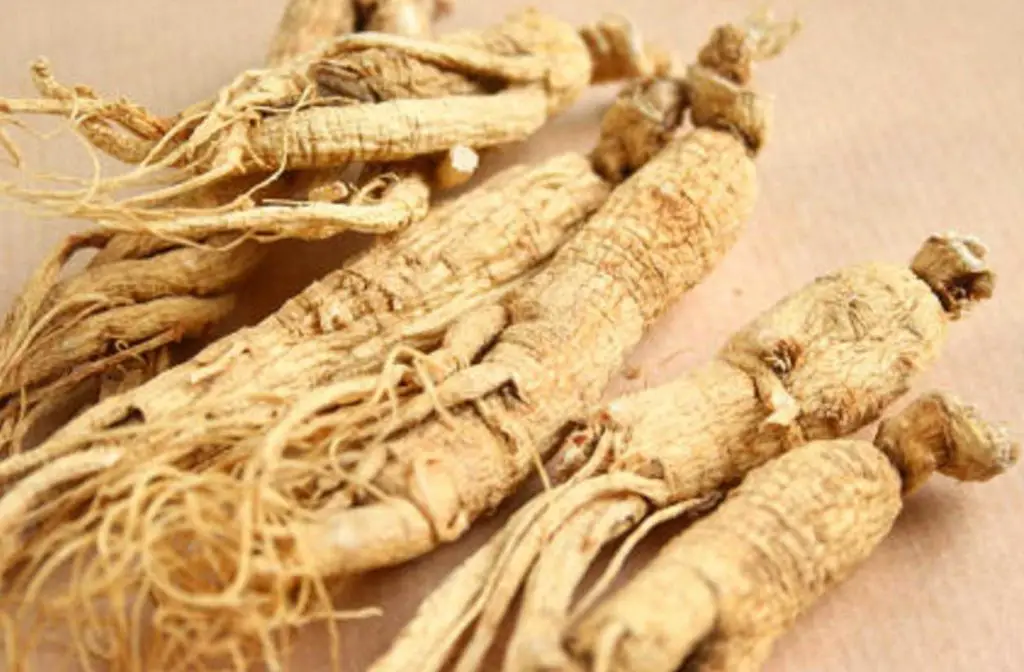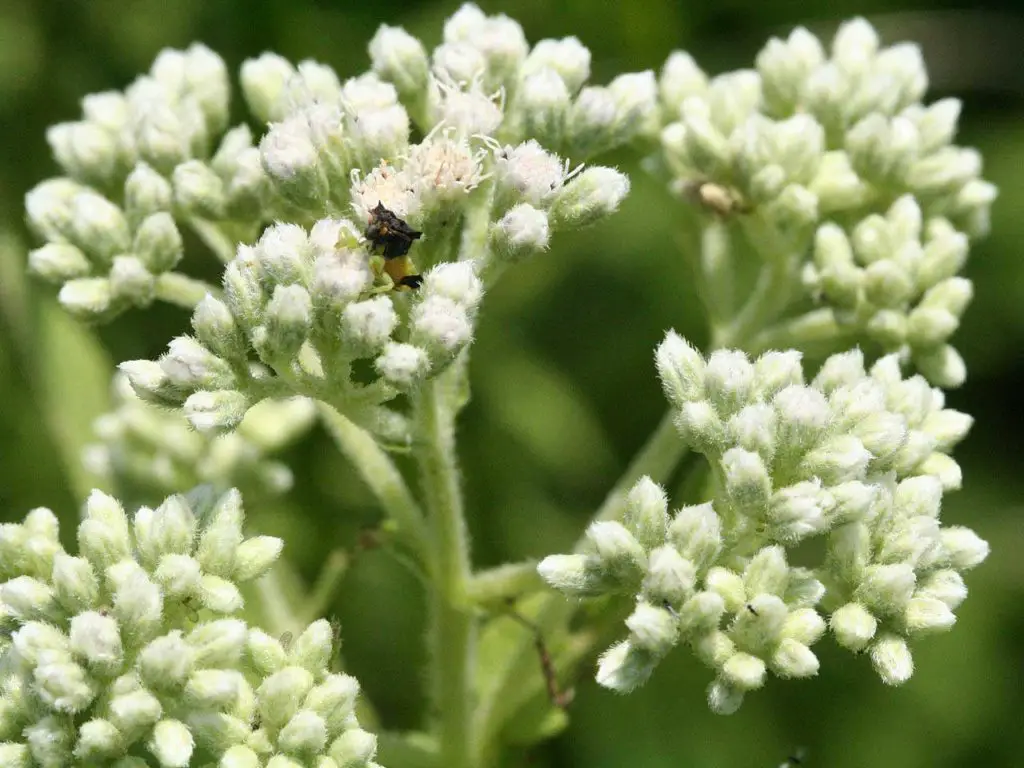- Standardized Name: Figwort
- Botanical Name: Scrophularia nodosa
- Family: Scrophulariaceae
- Related Species: Scrophularia Marilandica, Srophularia coccinea, Scrophularia californica (American Figwort); Scrophularia Ningpoensis (Xuan Shen, Chinese Figwort).

What is Figwort?
Figwort is a tall perennial herbaceous plant, traditionally used in treatment of scrofula (an infection of the lymph nodes in the neck, usually associated with tuberculosis) and other skin conditions such as eczema, psoriasis, rashes and swelling. Figworts have the following botanical characteristics.
- Roots – Horizontal rootstock, knotted or granulated, tuberous. Figwort roots have a somewhat acrid smell and taste, but both fade away after drying.
- Stems – Grow vertically up to approximately 150 cm (2 to 6 feet) in height. Figwort stems are smooth, leafy and rectangular with slightly rounded corners. At the base, the stems are about half an inch thick, and obtusely-angled and grooved (this maybe one of the reasons why Figworts are also known as the Carpenter’s Square.)
- Leaves – Heart-shaped, opposite petioles, short-stemmed, oval at the base and lanceolate (1 to 2 inches long) at the apex with serrated margins. Figwort leaves are smooth and dark green at the top. Underneath, they are lighter in colour.
- Flowers – Individual flowers are small, globular and double-lipped (the upper lip is brown
or purple and the lower one is green) with five sepals and petals. Clusters of flowers are arranged in loose cymes in open terminal thyrsoid panicles at the end of each branch. Figworts have a sympodial (cymose) growth. The middle flower of each branch of the cyme develops and dies, while the other flowers on the same branch will keep developing. Therefore, on the same branch, we can find flowers at different growing stages from an unopened bud to a nearly mature fruit (oval capsules with pitted seeds inside). - Habitat – The genus Scrophularia consists of more than a hundred species of herbs and their natives of almost every climate throughout the Northern Hemisphere. However, Scrophularia nodosa comprises of mostly the European and Asiatic plants. The American figworts are now considered to be a variety of the European species, known as Scrophularia Marilandica. This variety is taller, growing up to 5 or more feet, with thinner and occasional heart-shaped leaves. At the base, flower branches are slender and the roots are not knotted or granulated tubers. This variety can be found in regions spanning from the eastern coast of Canada and the United States as far as Utah. Other varieties can be found on the western coast, including the Scrophularia californica, and in New Mexico, the Srophularia coccinea. The latter differs from the genus common traits as it exhibits astounding bright red flowers.
- Harvest – Figworts thrive in wet and damp places and in open woodlands such as broad-leaved forests, waterside forests, forest margins, hedgerows, meadows, ditch banks, waste grounds and gardens. From Utah eastward, throughout the United States and Canada, different varieties of figworts can also be found along the borders of woods and dry roadsides. Figworts are usually gathered in the summertime, when they are in bloom. Since they have perennial roots, they can be found in the same vicinities year after year.
- History and Folklore – The taste and smell of figwort roots are unpleasant. They have only been used as a source of food in times of food scarcity. For example, during the siege of Rochelle by the army of Richelieu in 1628, the soldiers ate these roots to curb hunger. Since then, it has been called “Herbe du Siège” by the French.
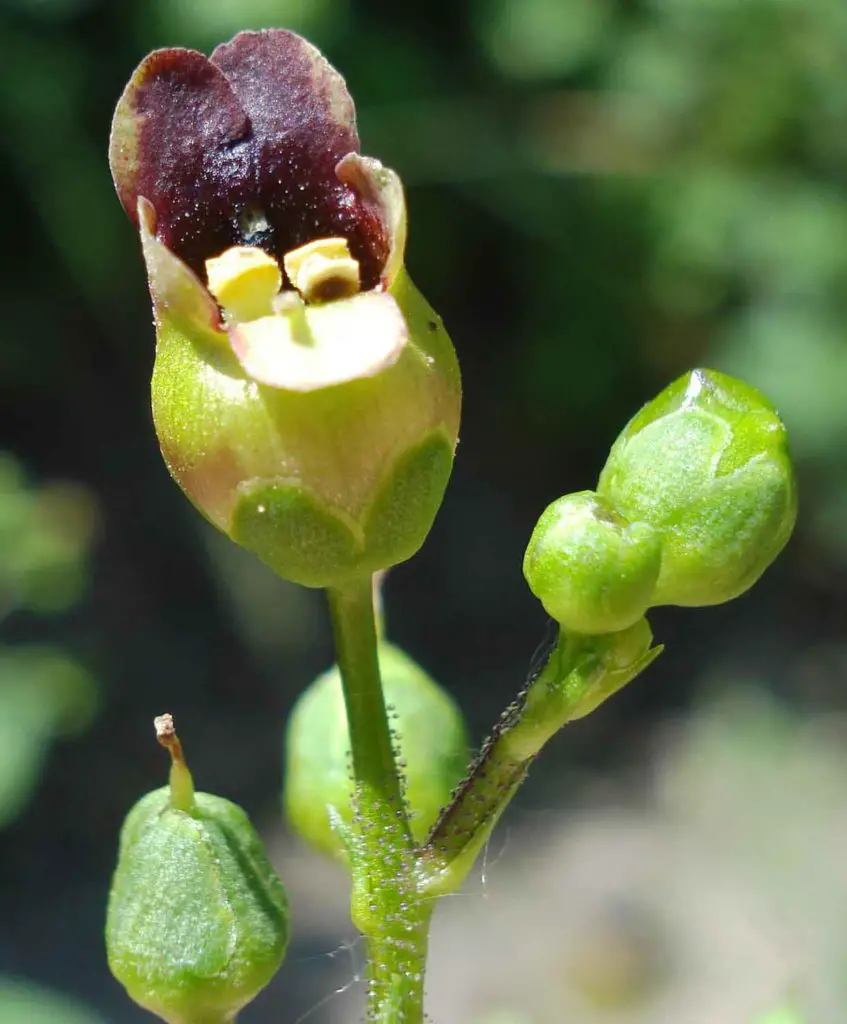
For centuries, people have been using figwort to treat warts, boils and swellings. In the Middle Ages, in particular, it was used as a treatment for scrofulous swellings (a form of tuberculosis), The resemblance between the figwort’s knotted tubers and scrofulous glands was believed to be a divine sign indicating that figworts could be used to treat the tuberculosis disease.
Did you know? Figwort has been used as a therapeutic plant for centuries. Get it here –> here
— MedicinalHerbals (@MedicinalHerbal) February 24, 2017

Figwort Benefits and Uses
As mentioned before, figwort has been traditionally recommended for lymphatic swellings, especially in the neck, and on open cuts. In Asia, the Scrophularia ningpoensis, has been used to relieve fevers, sore throat, and swollen red eyes associated with general toxemia, adrenal deficiency, and sore throat.
Figwort has been used as a therapeutic plant for centuries, however, it is only recently that scientists were able to identify a number of its constituents by means of biochemical analysis. Figworts main constituents are saponins, cardiac glycosides, diosmine, flavonoids , alkaloids, acids (caffeic, cumaric, ferulic), sucrose, mannitol, mineral salts, resin, hesperetin, iridoids.
Figworts have diuretic, anodyne and depurative medical properties. This indicates that figworts should enhance cleansing and detoxification, as well as soothe pain, activate blood circulation and more. The figwort plant has been used in homeopathic medicine in many forms (teas, ointments, decoctions, poultices, tinctures) in the treatment of several conditions:
- The infusion (tea) of figwort has been systematically administrated to cleanse the accumulation of toxic substances in the body in a large variety of conditions: lymphatic glands and nodes, rheumatic problems as well as skin problems such as eczema, scabies, scurf, rashes, psoriasis, pruritis, or any skin condition where there is itching, discharge, and irritation.
- The infusion of the figwort plant has also be used as a topical medication to heal the areas affected by skin inflammations, eczema, hemorrhoids, bruises and ringworm. Traditionally, baths are prepared with floral stalks to alleviate foot aches and rheumatism.
- When the figwort plant is made into an ointment, it can be applied on scratches, bruises, wounds, sore swellings and ulcers. Crushed fresh leaves can also be applied to burns and swellings.
- A decoction made of figwort root has been used to treat problems related to the throat, including tonsillitis and swollen glands, as well as for the healing of deep-rooted abscesses. When consumed, the decoction is said to restore lochial discharge and relieve the pains associated with severe menstruation.
- In a syrup form or an infusion, figwort has been claimed to be effective for treating hepatic diseases (disorders related to the liver) and can act as a deobstruent of the glandular system.
- The plant can be used as a gentle laxative to treat constipation as figwort contains the substance aucubin, an iridoid glycoside, which acts as a mild laxative and stimulates the excretion of uric acid. The iridoids found in this herb are also thought to have the ability to soothe joint pains.

Figwort Side Effects
Until more research has been done on the safety of figwort, the herb should not be used by pregnant or nursing women, as well as those with cardiac conditions or diabetes. It can interfere with some medications and it should not be given to children.
- Figwort is toxic when used in high doses because it contains saponins, which dilute the blood severely and can lead to serious side effects.
- Figwort might affect blood sugar levels. Those with diabetes should monitor blood sugar levels carefully when using figwort.
- Figwort contains cardiac glycosides that can affect the heart. Special care must be taken when using the herbs internally and it should be completely avoided by people with heart problems.
- When ingested in large quantities, figwort can cause vomiting and diarrhea.
Figwort Tea vs Figwort Tincture
Figwort tea is used externally to treat skin conditions, heal wounds, ulcers, burns, and hemorrhoids. It is used internally for its mild laxative effect, and mild diuretic and heart-strengthening properties. The tea is relatively easy to prepare by simply placing 1 teaspoon of ground plant or ground leaves in 100 mL of boiling water, cover for 10 minutes, and then filter.
The preparation of figwort tincture at home is not easy. It is time-consuming and not recommended. Figwort tinctures should be taken in conjunction with other herbs. For instance, to cure constipation, the tincture should be taken with herbs having digestive properties such as dandelion or rhubarb; for treating scrofulous infections and cutaneous diseases, it should be taken in combination with herbs such as burdock, bittersweet and yellow dock. The compound tincture is percolated with alcohol and kept for 15 days and then filtered. To use it externally, the diluted tincture can be gargled or placed on wounds.
Usually, it is recommended to drink 3 cups of figwort tea a day. It is considered safe for regular consumption, but do not ignore any initial side effects before deciding to drink it regularly.
For a tincture, mix one part figwort plant to 5 parts alimentary alcohol. It is usually recommended to take 5-10 drops, 2-3 times a day. Nevertheless, caution is advised. Repeated doses of figwort tincture (from 20 drops to a teaspoonful) has been reported to cause: vertigo; free bleeding of the gums; salivation; increased appetite; colic; general weariness; sleepiness and sallow skin.

Figwort Dosage Information
The appropriate and therapeutic dose of common figwort will depend on the patient’s age, health, and several other conditions. A healthcare provider should be consulted prior to using figwort as a regular treatment.
References:
https://www.google.com/patents/US8597695
http://onlinelibrary.wiley.com/doi/10.1002/ptr.798/abstract
http://www.sciencedirect.com/science/article/pii/S0176161787800524

